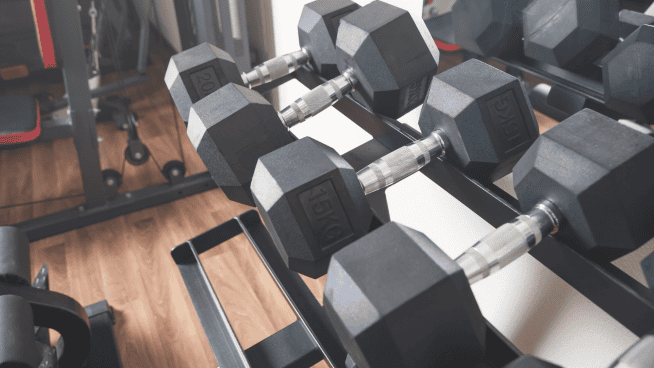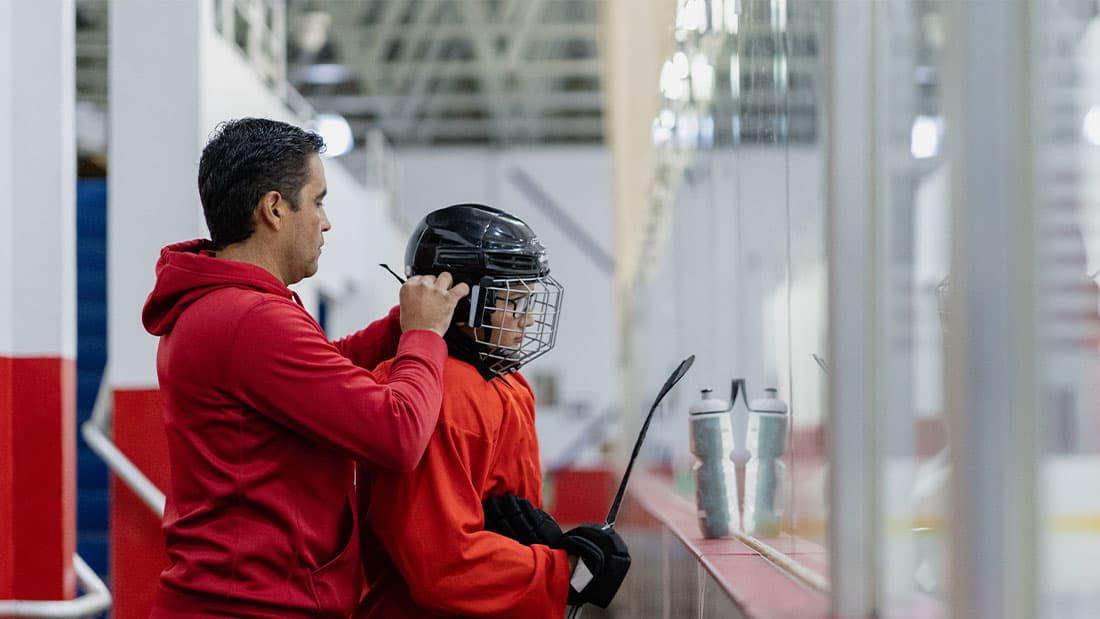The Minimalist’s Guide to Strength Training: How to Get Strong with Just a Few Key Exercises
Strength training can seem overwhelming, especially with the vast amount of exercises, programs, and equipment available. For many, dedicating hours to the gym or buying expensive equipment is daunting.
However, the truth is you don’t need a lot of exercise or gear to build a strong, resilient body. A minimalist approach—focused on a few fundamental, compound movements—can yield impressive results when done consistently and with proper technique.
Here are the principles behind minimalist strength training and the essential exercises to build strength without complexity. Whether you’re a beginner or an experienced lifter looking to simplify your routine, here is how to maximize gains with minimal time and equipment.
Understanding Minimalist Strength Training
The minimalist approach to strength training revolves around efficiency. Instead of focusing on countless isolated exercises that target small muscle groups, it emphasizes compound movements—exercises that work multiple muscle groups simultaneously. This saves time and promotes functional strength, improving your performance in daily activities and other athletic endeavors.
Benefits of Minimalist Strength Training
- Time-Efficient: By focusing on key movements, you work out less and still achieve effective results.
- Functional Strength: Compound exercises mimic real-life movement patterns, enhancing overall athleticism and daily functionality.
- Simplified Routine: With fewer exercises, you reduce decision fatigue, making it easier to maintain consistency.
- Adaptability: This approach requires minimal equipment, making it accessible for home workouts or those with limited gym access.
Minimalist strength training isn’t about doing less; it’s about doing more with less. Your focus should be on quality over quantity, ensuring each session is impactful.
The Essential Exercises
To build a strong foundation, focus on these six fundamental exercises. These compound movements work for various muscle groups simultaneously. They are versatile enough to adapt to any fitness level.
The Five Key Exercises:
Squats
Works: Quadriceps, hamstrings, glutes, core.
Benefits: Squats are the king of lower-body exercises, enhancing strength, mobility, and stability. Squats can be done with body weights, bands, dumbbells, or a barbell, making them suitable for all levels.
Deadlift
Works: Hamstrings, glutes, back, core
Benefits: The deadlift builds total body strength, especially in the posterior chain (backside). It’s one of the most functional lifts directly related to real-life strength and stability.
Nordic Hip Bridge
Works: Hamstrings, abs, and back.
Benefits: Safety builds hamstring strength in a simple way that prevents strain.
Push-Up
Works: Chest, shoulders, triceps, core.
Benefits: A push-up is a versatile upper-body exercise that can be modified to match your skill level. It builds upper body strength and stabilizes the core, promoting muscle balance.
Pull-Up/Row
Works: Back, biceps, shoulders, core
Benefits: Both pull-ups and rows target the upper body and develop back strength. Rows can be performed with dumbbells, isometrically, and with resistance bands.
Overhead Press
Works: Shoulders, triceps, upper chest, core
Benefits: This pressing movement strengthens the upper body, focusing on the shoulders and arms while engaging the core for stability. It can be done with dumbbells, a barbell, or resistance bands.
These exercises collectively target the entire body, ensuring balanced strength development. Incorporating them into your routine allows you to work multiple muscle groups efficiently, promoting muscle growth and functional power without needing isolated exercises.
Structuring a Minimalist Strength Training Program
A minimalist program doesn’t require a complex split routine. Instead, the focus is on full-body workouts performed 2-3 times weekly, allowing optimal recovery and strength progression.
Sample Weekly Structure:
- Day 1: Squat, Push-Up, Pull-Up
- Day 2: Rest or Active Recovery (e.g., walking, mobility work)
- Day 3: Deadlift, Overhead Press, Core Work (e.g., planks)
- Day 4: Rest or Active Recovery
- Day 5: Repeat Day 1’s exercises with slight variations (e.g., changing grip or stance)
Tips for Program Success
- Progressive Overload: Gradually increase the load and resistance over time to continue building strength.
- Form Over Reps: Prioritize good form to reduce the risk of injury.
- Consistency: Aim for consistency rather than perfection. Two to three weekly sessions, maintained over several months, will lead to significant gains.
This program design allows flexibility and simplicity, ensuring you can complete your workout efficiently, even on busy days.
Minimalist Equipment Options
One of the most appealing aspects of a minimalist strength training approach is the limited equipment requirement. While having access to a full gym is beneficial, it’s not necessary to build strength.
Recommended Minimalist Equipment
- Dumbbells or Kettlebells: Versatile for exercises like squats, deadlifts, rows, and presses.
- Resistance Bands: Ideal for resistance to bodyweight exercises like push-ups or pull-ups.
- Pull-Up Bar: A simple yet effective tool for developing upper body strength.
- Bodyweight: Many exercises, like push-ups and squats, can be done without equipment.
You can build an effective strength program using just your body weight or a small investment in basic equipment. This approach is perfect for home workouts, travel, or those who prefer to exercise outdoors.
Progress Tracking and Adjustments
To see progress, tracking your workouts and making adjustments over time is essential. Minimalist strength training relies on the principle of progressive overload—continually challenging your muscles to grow stronger by gradually increasing resistance or reps.
Ways to Track and Progress
- Log Your Workouts: Record the weight used, reps, and sets for each exercise. This helps you identify when it’s time to increase the challenge.
- Adjust Reps and Sets: Begin with 2-3 sets of 8-12 reps per exercise. As you get stronger, increase the weight or add an additional set.
- Periodization: Every 4-6 weeks, change the rep range or tempo to stimulate growth and avoid plateaus.
Consistency is Key
Strength training doesn’t have to be complicated; it just needs to be consistent. By focusing on a few essential compound exercises and following a simple, consistent routine, you can build impressive strength without spending hours in the gym or investing in a lot of equipment.
The minimalist approach maximizes efficiency, making it accessible regardless of schedule or resources.
Embrace the basics, track your progress, and remain consistent—these are the keys to a strong, resilient body.
Check out my book Eat to Win for weeks of nutritional plans for breakfast, lunch and dinner. And Blended Bliss if you love smoothies!
Check out my INSTANT STRENGTH book for total strength, speed, and power programs.
To maximize stability, mobility, and flexibility, check out my book, THE BALANCED BODY.
To see great exercises, methods, and techniques videos, subscribe to my YouTube channel, BALANCED BODY.
RECOMMENDED FOR YOU
MOST POPULAR
The Minimalist’s Guide to Strength Training: How to Get Strong with Just a Few Key Exercises
Strength training can seem overwhelming, especially with the vast amount of exercises, programs, and equipment available. For many, dedicating hours to the gym or buying expensive equipment is daunting.
However, the truth is you don’t need a lot of exercise or gear to build a strong, resilient body. A minimalist approach—focused on a few fundamental, compound movements—can yield impressive results when done consistently and with proper technique.
Here are the principles behind minimalist strength training and the essential exercises to build strength without complexity. Whether you’re a beginner or an experienced lifter looking to simplify your routine, here is how to maximize gains with minimal time and equipment.
Understanding Minimalist Strength Training
The minimalist approach to strength training revolves around efficiency. Instead of focusing on countless isolated exercises that target small muscle groups, it emphasizes compound movements—exercises that work multiple muscle groups simultaneously. This saves time and promotes functional strength, improving your performance in daily activities and other athletic endeavors.
Benefits of Minimalist Strength Training
- Time-Efficient: By focusing on key movements, you work out less and still achieve effective results.
- Functional Strength: Compound exercises mimic real-life movement patterns, enhancing overall athleticism and daily functionality.
- Simplified Routine: With fewer exercises, you reduce decision fatigue, making it easier to maintain consistency.
- Adaptability: This approach requires minimal equipment, making it accessible for home workouts or those with limited gym access.
Minimalist strength training isn’t about doing less; it’s about doing more with less. Your focus should be on quality over quantity, ensuring each session is impactful.
The Essential Exercises
To build a strong foundation, focus on these six fundamental exercises. These compound movements work for various muscle groups simultaneously. They are versatile enough to adapt to any fitness level.
The Five Key Exercises:
Squats
Works: Quadriceps, hamstrings, glutes, core.
Benefits: Squats are the king of lower-body exercises, enhancing strength, mobility, and stability. Squats can be done with body weights, bands, dumbbells, or a barbell, making them suitable for all levels.
Deadlift
Works: Hamstrings, glutes, back, core
Benefits: The deadlift builds total body strength, especially in the posterior chain (backside). It’s one of the most functional lifts directly related to real-life strength and stability.
Nordic Hip Bridge
Works: Hamstrings, abs, and back.
Benefits: Safety builds hamstring strength in a simple way that prevents strain.
Push-Up
Works: Chest, shoulders, triceps, core.
Benefits: A push-up is a versatile upper-body exercise that can be modified to match your skill level. It builds upper body strength and stabilizes the core, promoting muscle balance.
Pull-Up/Row
Works: Back, biceps, shoulders, core
Benefits: Both pull-ups and rows target the upper body and develop back strength. Rows can be performed with dumbbells, isometrically, and with resistance bands.
Overhead Press
Works: Shoulders, triceps, upper chest, core
Benefits: This pressing movement strengthens the upper body, focusing on the shoulders and arms while engaging the core for stability. It can be done with dumbbells, a barbell, or resistance bands.
These exercises collectively target the entire body, ensuring balanced strength development. Incorporating them into your routine allows you to work multiple muscle groups efficiently, promoting muscle growth and functional power without needing isolated exercises.
Structuring a Minimalist Strength Training Program
A minimalist program doesn’t require a complex split routine. Instead, the focus is on full-body workouts performed 2-3 times weekly, allowing optimal recovery and strength progression.
Sample Weekly Structure:
- Day 1: Squat, Push-Up, Pull-Up
- Day 2: Rest or Active Recovery (e.g., walking, mobility work)
- Day 3: Deadlift, Overhead Press, Core Work (e.g., planks)
- Day 4: Rest or Active Recovery
- Day 5: Repeat Day 1’s exercises with slight variations (e.g., changing grip or stance)
Tips for Program Success
- Progressive Overload: Gradually increase the load and resistance over time to continue building strength.
- Form Over Reps: Prioritize good form to reduce the risk of injury.
- Consistency: Aim for consistency rather than perfection. Two to three weekly sessions, maintained over several months, will lead to significant gains.
This program design allows flexibility and simplicity, ensuring you can complete your workout efficiently, even on busy days.
Minimalist Equipment Options
One of the most appealing aspects of a minimalist strength training approach is the limited equipment requirement. While having access to a full gym is beneficial, it’s not necessary to build strength.
Recommended Minimalist Equipment
- Dumbbells or Kettlebells: Versatile for exercises like squats, deadlifts, rows, and presses.
- Resistance Bands: Ideal for resistance to bodyweight exercises like push-ups or pull-ups.
- Pull-Up Bar: A simple yet effective tool for developing upper body strength.
- Bodyweight: Many exercises, like push-ups and squats, can be done without equipment.
You can build an effective strength program using just your body weight or a small investment in basic equipment. This approach is perfect for home workouts, travel, or those who prefer to exercise outdoors.
Progress Tracking and Adjustments
To see progress, tracking your workouts and making adjustments over time is essential. Minimalist strength training relies on the principle of progressive overload—continually challenging your muscles to grow stronger by gradually increasing resistance or reps.
Ways to Track and Progress
- Log Your Workouts: Record the weight used, reps, and sets for each exercise. This helps you identify when it’s time to increase the challenge.
- Adjust Reps and Sets: Begin with 2-3 sets of 8-12 reps per exercise. As you get stronger, increase the weight or add an additional set.
- Periodization: Every 4-6 weeks, change the rep range or tempo to stimulate growth and avoid plateaus.
Consistency is Key
Strength training doesn’t have to be complicated; it just needs to be consistent. By focusing on a few essential compound exercises and following a simple, consistent routine, you can build impressive strength without spending hours in the gym or investing in a lot of equipment.
The minimalist approach maximizes efficiency, making it accessible regardless of schedule or resources.
Embrace the basics, track your progress, and remain consistent—these are the keys to a strong, resilient body.
Check out my book Eat to Win for weeks of nutritional plans for breakfast, lunch and dinner. And Blended Bliss if you love smoothies!
Check out my INSTANT STRENGTH book for total strength, speed, and power programs.
To maximize stability, mobility, and flexibility, check out my book, THE BALANCED BODY.
To see great exercises, methods, and techniques videos, subscribe to my YouTube channel, BALANCED BODY.











